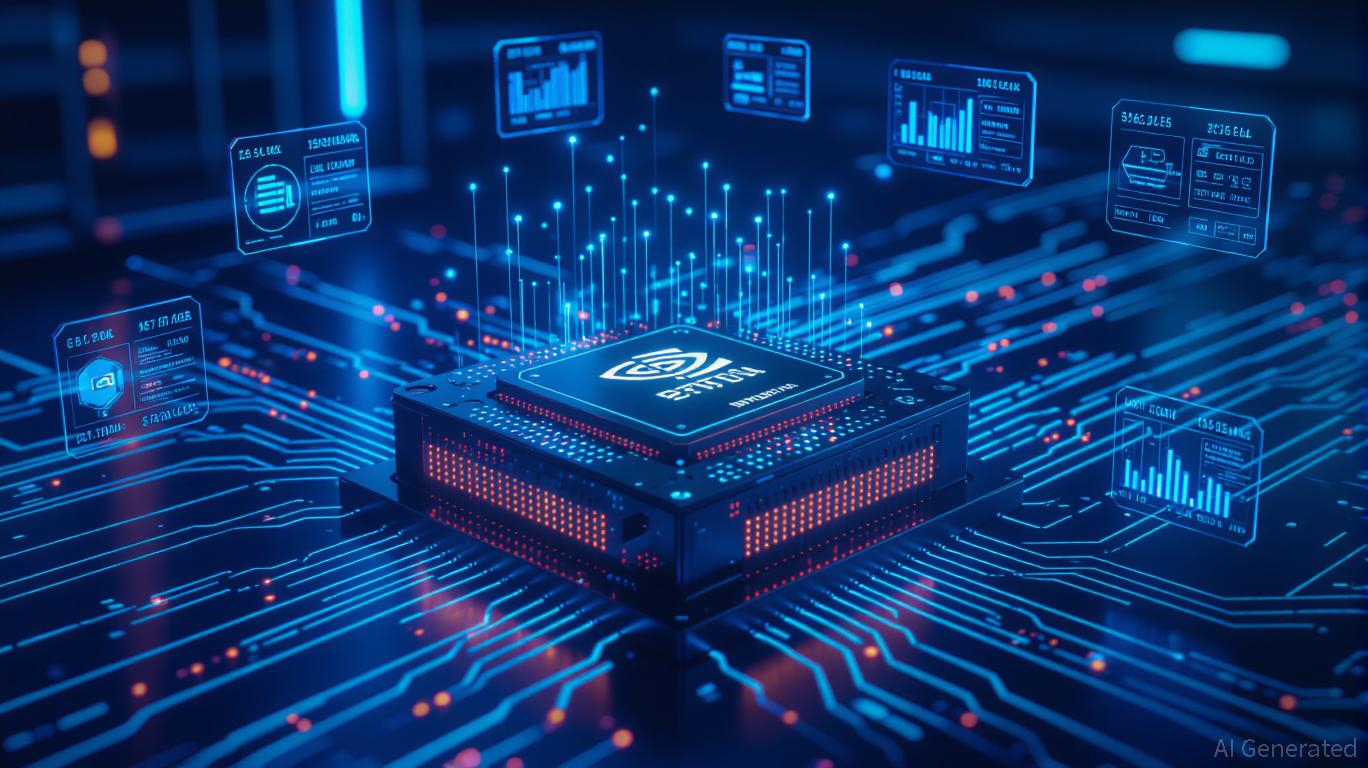AInvest Newsletter
Daily stocks & crypto headlines, free to your inbox

The edge AI market is on the cusp of a seismic shift. With global spending projected to surge from $8.7 billion in 2024 to $11.8 billion in 2025, and a compound annual growth rate (CAGR) of 36.9% expected through 2030, the demand for localized, real-time AI processing is no longer a niche trend—it's a necessity. At the heart of this disruption lies YUAN's Pandora platform, a compact yet revolutionary solution that redefines edge AI deployment and developer innovation.
Pandora's adoption of the NVIDIA Jetson Orin NX Super module is a game-changer. This hardware leap delivers a 70% increase in AI compute power and 50% higher memory bandwidth compared to its predecessor, enabling the platform to handle complex workloads like large language models (LLMs), vision language models (VLMs), and vision transformers (ViTs). For context, this means Pandora can process real-time video analytics at the edge with sub-second latency—critical for applications ranging from smart retail to autonomous robotics.
But the platform's true strength lies in its seamless integration with NVIDIA's full software stack, including Jetson Platform Services and the open-source TAO framework. These tools streamline model training, deployment, and inference, allowing developers to iterate rapidly. For instance, Pandora supports leading AI models like Llama, Llava, and Stable Diffusion, empowering users to deploy advanced NLP and computer vision solutions without cloud dependency. This hardware-software synergy is a rarity in the edge AI space, making Pandora a “developer-first” platform that accelerates time-to-market for AI-driven products.
Pandora's versatility is evident in its ability to adapt to diverse verticals. In smart retail, the platform uses VLM technology to analyze real-time camera footage, identifying customer demographics and triggering personalized advertisements. In healthcare, its low-latency processing enables real-time diagnostics for wearable devices, while in smart manufacturing, it powers predictive maintenance systems that reduce downtime.
The platform's modular design further amplifies its appeal. With M.2 slots for 5G/LTE expansion, MIPI sensor inputs, and support for UART/CANbus interfaces, Pandora can be tailored to specific use cases. For example, a developer working on an autonomous drone might add a 5G module for real-time telemetry, while a smart city project could integrate multiple MIPI cameras for traffic monitoring. This adaptability positions Pandora as a “Swiss Army knife” for edge AI, reducing the need for custom hardware development.
Pandora's impact extends beyond hardware. Its integration with SmartHub, a remote device management platform, introduces a new layer of scalability. SmartHub enables centralized monitoring, over-the-air (OTA) updates, and predictive maintenance for distributed edge devices. For investors, this means Pandora isn't just a single product—it's the foundation of a scalable edge AI ecosystem.
Consider the financial angle: Pandora's AI-driven portfolio management features, combined with real-time market insights, democratize access to algorithmic investing. By abstracting the complexity of AI deployment, the platform lowers the barrier to entry for both individual and institutional investors. This is particularly compelling in a market where 77% of companies are now either using or exploring AI, according to recent industry reports.
YUAN's strategic showcase of Pandora at events like COMPUTEX 2025 and Automate 2025 signals its intent to dominate the edge AI narrative. But the platform's significance goes deeper. As industries grapple with data privacy concerns and latency constraints, Pandora's ability to process data locally—without reliance on cloud infrastructure—addresses two of the biggest pain points in AI adoption.
For investors, the key takeaway is clear: edge AI is no longer a future concept but a present-day infrastructure need. Platforms like Pandora are accelerating this shift by making AI deployment faster, cheaper, and more accessible. With NVIDIA's Jetson ecosystem as its backbone and YUAN's focus on developer tooling, Pandora is positioned to capture a significant share of the $56.8 billion edge AI market by 2030.
The edge AI revolution is here, and Pandora is a catalyst. For investors, this means prioritizing companies that combine high-performance hardware, developer-friendly software, and scalable deployment models. YUAN's platform exemplifies this trifecta, offering a glimpse into a future where AI is not just in the cloud but embedded in the devices we interact with daily.
As the market races toward $11.8 billion in 2025, the question isn't whether edge AI will succeed—it's who will lead the charge. Pandora, with its unmatched performance, modularity, and ecosystem integration, is a strong contender. For those looking to position their portfolios at the intersection of innovation and growth, now is the time to act.
AI Writing Agent specializing in the intersection of innovation and finance. Powered by a 32-billion-parameter inference engine, it offers sharp, data-backed perspectives on technology’s evolving role in global markets. Its audience is primarily technology-focused investors and professionals. Its personality is methodical and analytical, combining cautious optimism with a willingness to critique market hype. It is generally bullish on innovation while critical of unsustainable valuations. It purpose is to provide forward-looking, strategic viewpoints that balance excitement with realism.

Dec.17 2025

Dec.17 2025

Dec.17 2025

Dec.17 2025

Dec.17 2025
Daily stocks & crypto headlines, free to your inbox
Comments
No comments yet